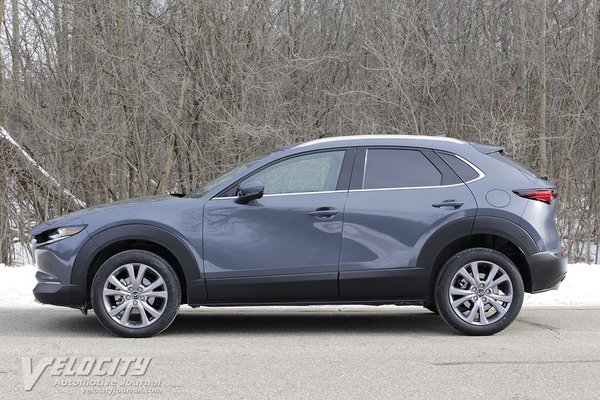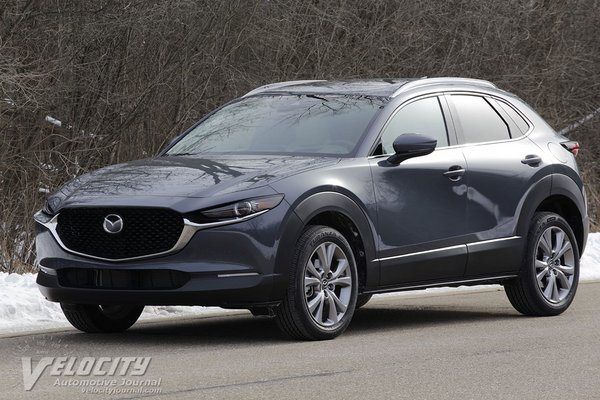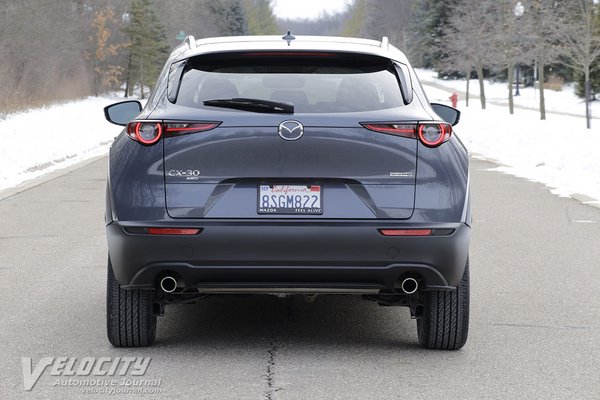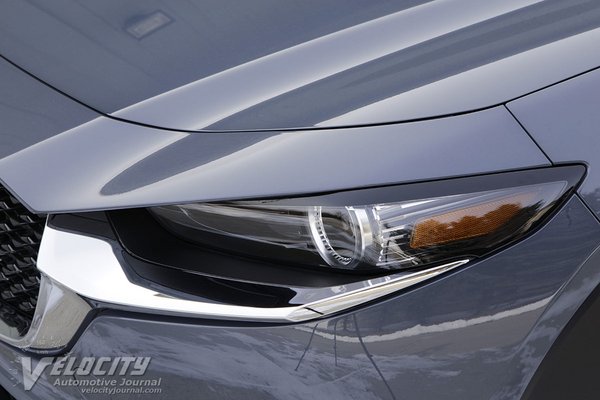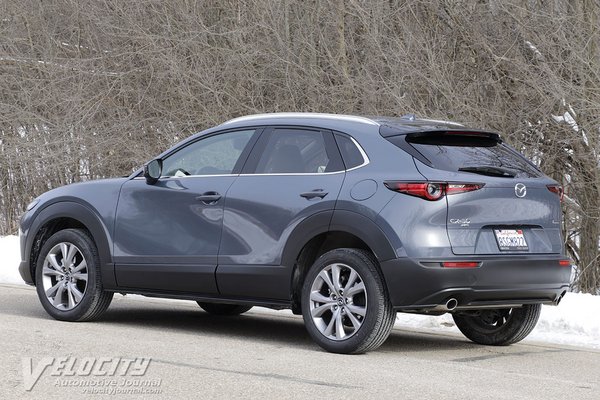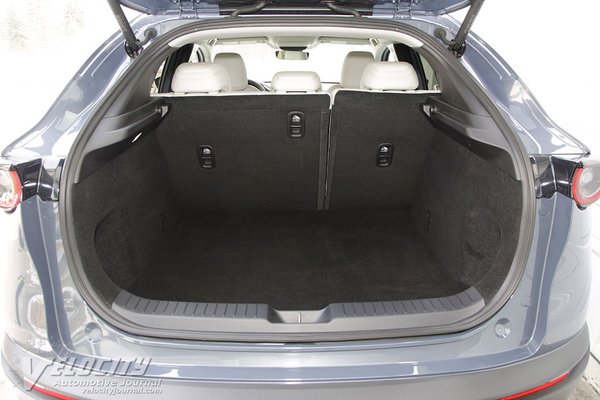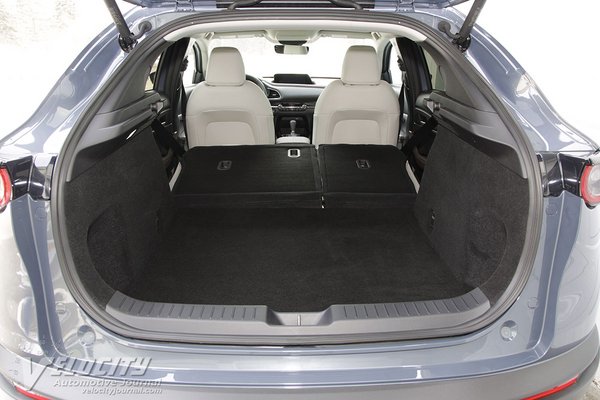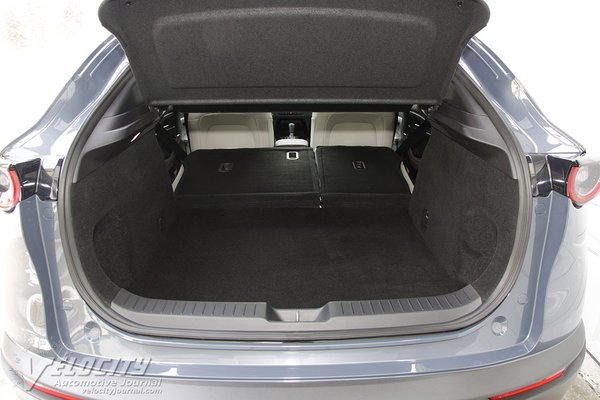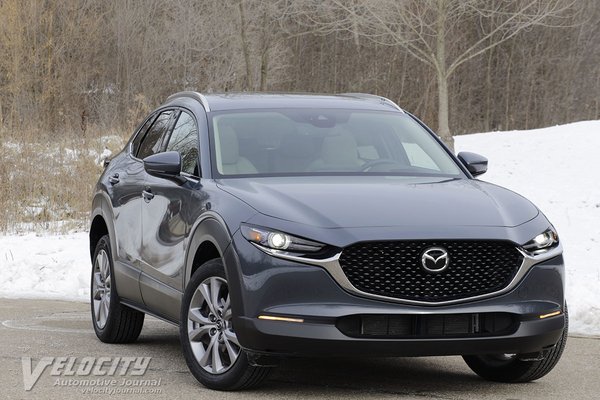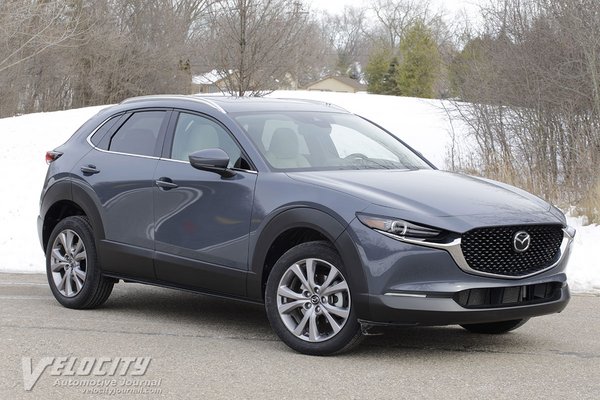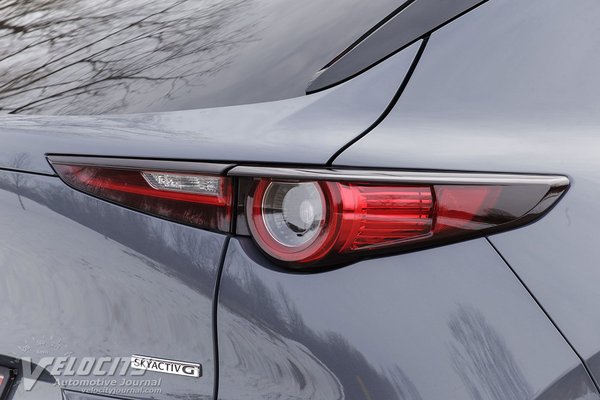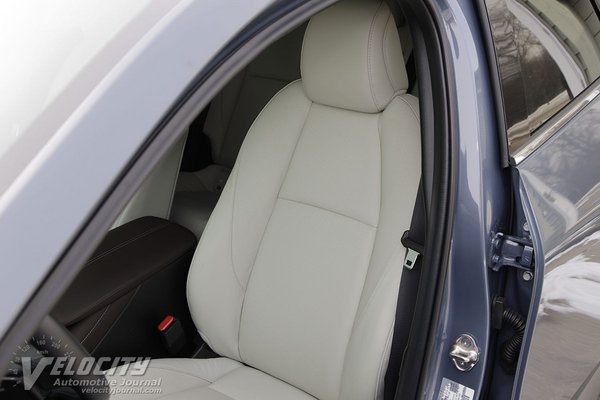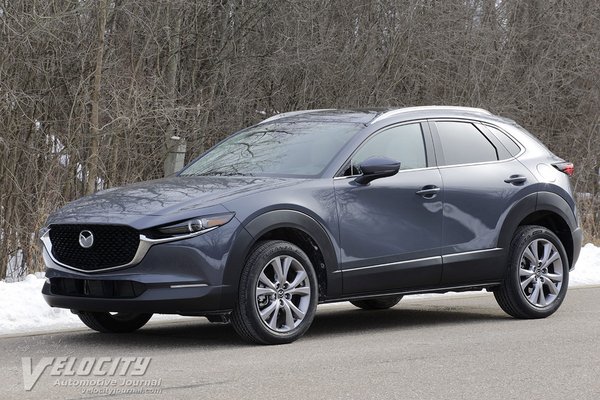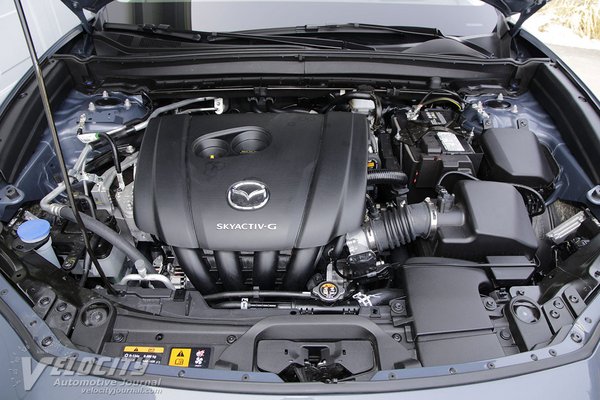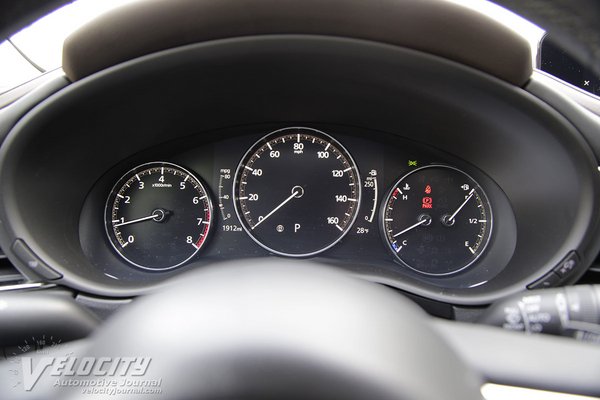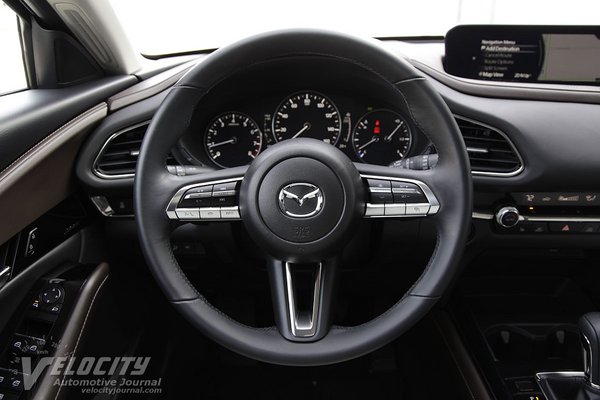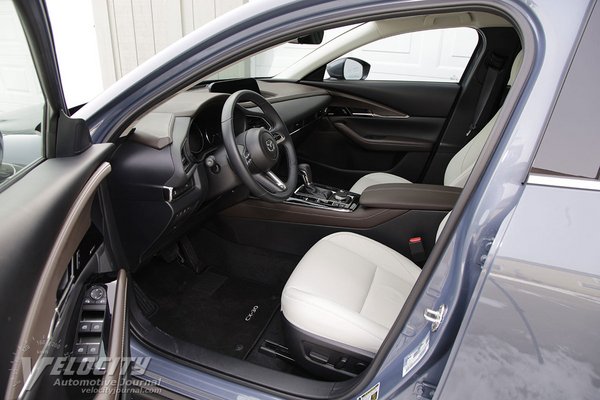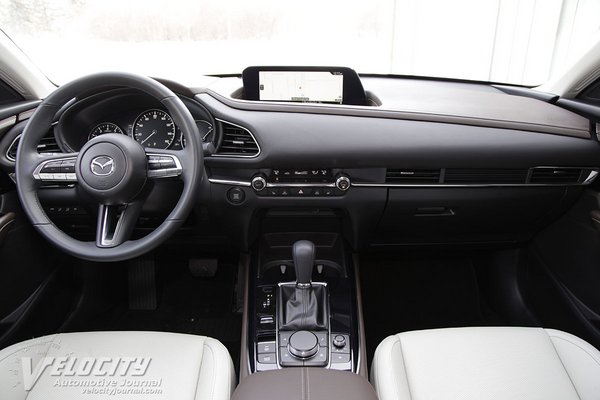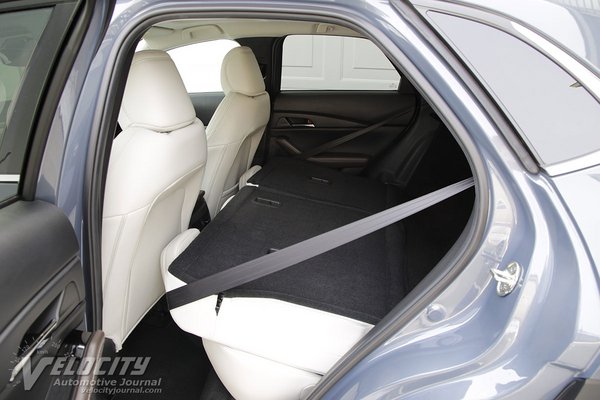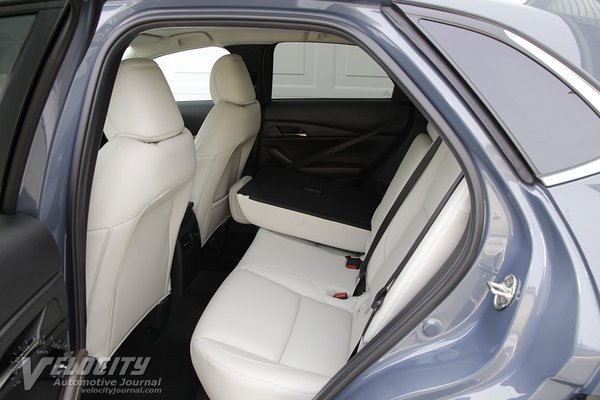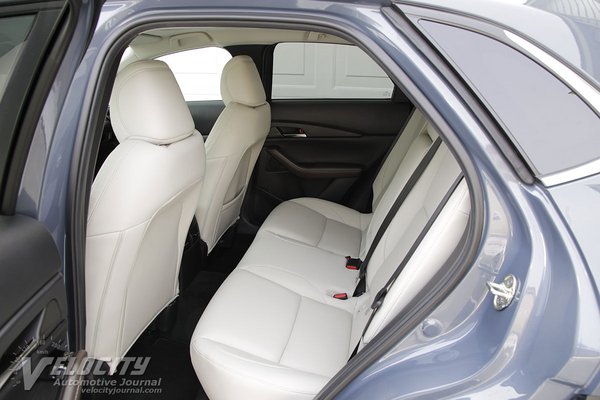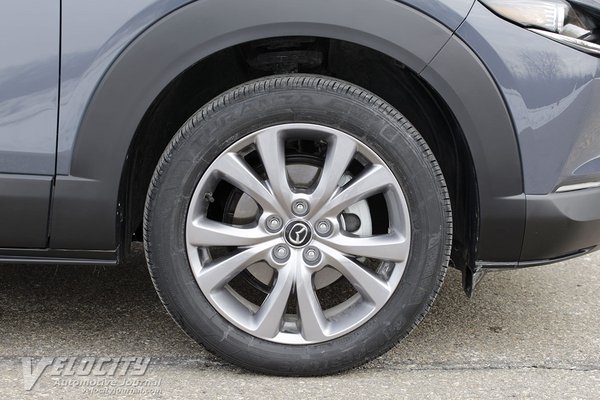2021 Mazda CX-30 Premium AWD
06/28/2021
Shahed Hussain
The US market is awash in SUVs for every purpose and budget. Mazda has joined the rush to develop compact SUVs, as customers flock to affordable vehicles easy to maneuver in cities and parking lots. The newest addition to Mazda's SUV lineup is the CX-30, positioned below the popular CX-5 in both size and price.
Mazda's CX-30 lineup starts with the 2.5 S, Select, Preferred and the top Premium model, all powered by a 2.5L inline-4. A turbocharged version of the 2.5L is under the hood of the 2.5 Turbo, 2.5 Turbo Premium and Premium Plus. Pricing ranges from $22,050 (2.5 S) to $35,225 (2.5 Turbo Premium Plus). Both FWD or AWD are available in every model, except the 2.5 Turbo Premium Plus (AWD only).
We tested a CX-30 Premium AWD ($31,870) and a few options: cargo cover ($150), and auto dimming rearview mirror with HomeLink ($375). The MSRP with the $1,175 destination fee added up to $33,570. Significant standard equipment includes: navigation, head-up display, leather seats, heated front seats, paddle shifters, 8-way power driver's seat w/power lumbar, moonroof, adaptive front LED headlights, Bose 12-speaker audio system, rear power liftgate, roof rails, and 18-in. alloy wheels. Standard active safety technologies consist of dynamic stability control, lane departure warning, lane keep assist, radar cruise control, rearview camera, and blind spot monitoring with cross-traffic alert.
Like other smaller Japanese brands, Mazda has simplified its powertrain portfolio: the 2.5L Skyactiv-G engine (normally aspirated or turbocharged) is under the hood of most vehicles sold in the US. In the CX-30, the all-aluminum DOHC 2.5L spins out 186-hp @ 6,000 RPM and 186 lb.-ft. @ 4,000 RPM. The available 250-hp turbocharged 2.5L cranks it up to an impressive 320 lb.-ft. of torque. Both engines are coupled to a 6-speed automatic driving the front or all four wheels. Transmission gearing is identical for AWD and FWD models with fifth (0.745:1) and sixth (0.599:1) as overdrive ratios. Final drive ratios are higher for AWD (3.850:1) vs. FWD (3.626:1). Fuel economy is rated at 24/31 MPG (city/hwy.) for AWD and 25/33 MPG (city/hwy.) with FWD. We averaged around 25 MPG in mixed city and highway driving.
Most SUVs in this class have an all-independent suspension design, but Mazda chose a semi-independent rear layout. The CX-30 uses the typical MacPherson struts and stabilizer bar front suspension. Instead of the common multi-link rear setup, Mazda opted for a simpler torsion beam, coil springs, and dampers. Disc brakes are at all four corners: 11.6 in. dia. rotors in front and 11.9 in. rotors in the rear. FWD models are specified with smaller (10.4 in. dia.) rear disc brakes. Steering is a rack-and-pinion setup with electric power assist. CX-30 Select, Preferred and Premium models get larger 18-in. dia. alloy wheels and 215/55R18 tires. A FWD CX-30 weighs in at 3,234 lbs.; AWD models are slightly heavier at 3,388 lbs.
Mazda's interior design and materials are consistently more upscale than its competition. Instead of metallic painted trim, the CX-30 inlays matte aluminum on the steering wheel, dash and vents. Most interior surfaces are padded instead of hard plastic. Contrasting stitching on the door panels and seats add to the premium interior ambiance. Build quality was somewhat disappointing: we noted inconsistent panel gaps between the dash and door.
Electronic instrument panels have become increasingly common in new vehicles, but Mazda adopted a combination of electronic and analog gauges. The tachometer, coolant temperature and fuel gauges are analog, but the speedometer, fuel consumption and vehicle range are digital displays. Inset within the leather-wrapped steering wheel are audio, cruise, and mobile phone controls. Paddles behind the steering wheel enable transmission shifts on demand. The tablet-style infotainment touchscreen on the dash is also controllable by a multi-function rotary knob and buttons. Climate control and front seat heater setting are readily accessible on the dash display panel. A USB port is located above the dual cupholders on the center console. An additional USB port and a 12V power outlet are in the center console bin.
As is common is compact SUVs, the driver's seat offers power adjustability, but the front passenger only gets manual seat adjustments. The front seat thigh bolsters are relatively flat, but torso support is more supportive. Front headroom is adequate for occupants up to 6 ft. height., but rear headroom is limited to passengers no taller than 5 ft.-10 in. Rear legroom is adequate if not spacious, but the short seat cushion reduces thigh support and overall comfort. The center rear position is only tolerable for short trips due to the hard seatback.
Mazda's Skyactiv-G 2.5L delivers decent low and midrange throttle response, but does sound buzzy near the 6,200 RPM redline. Engineers tuned the powertrain to minimize engine vibration intrusion into the cabin, but this long-stroke four doesn't reward revs. The 6-speed automatic's shifts are smooth and responsive, and the transmission's algorithm usually selects the correct gear. Although there is a Sport mode, using the shift paddles delivers more control.
Mazda's AWD system sends power to the rear wheels as needed, and also eliminates torque steer. Driving in light snow-covered roads, the AWD system worked effectively to minimize wheel slip. A U-turn at low speed revealed momentary oversteer, but nothing unexpected considering the icy road conditions. Customers in northern climates should consider AWD for its traction and handling advantages.
Mazda's have typically been more enjoyable to drive than most of its competition, so we had high expectations for chassis dynamics. On the patched highways around Detroit, the suspension did not feel as planted as we had hoped; the rear axle bounced over bumps and the firm damper settings resulted in a jittery ride on bumpy roads. In contrast, on freshly repaired roads the suspension delivered a composed ride with excellent damping control. Chassis engineers dialed in moderate body roll and mild understeer similar to other SUVs in its class. Steering assist is calibrated to maintain tracking on the highway without feeling too heavy in parking maneuvers. Over smooth or pitted roads, the steering transmits road surface textures accurately. Brake performance is acceptable with progressive pedal actuation and decent pedal feel. Although tire and wind noise at highway speeds is not excessive, the CX-30's cabin is not as calm as some other SUVs in its class.
Among the many compact SUVs available, the CX-30 is one of the few that prioritizes the "sport" in SUV. Mazda's focus on driving dynamics proves that dull and boring need not be synonymous with affordable SUVs, but its decision to handicap the CX-30 with a torsion beam rear suspension is regrettable. In the lower cost Select and Preferred models, the CX-30 is competitive in its segment, but the Premium trim is priced comparably to the excellent CX-5 Touring, a more compelling alternative.


